Kohlrabi is a biennial vegetable belonging to the Brassica oleracea species, including vegetables such as cabbage, broccoli, and Brussels sprouts. Kohlrabi is a cool-weather crop best grown in the spring or fall.
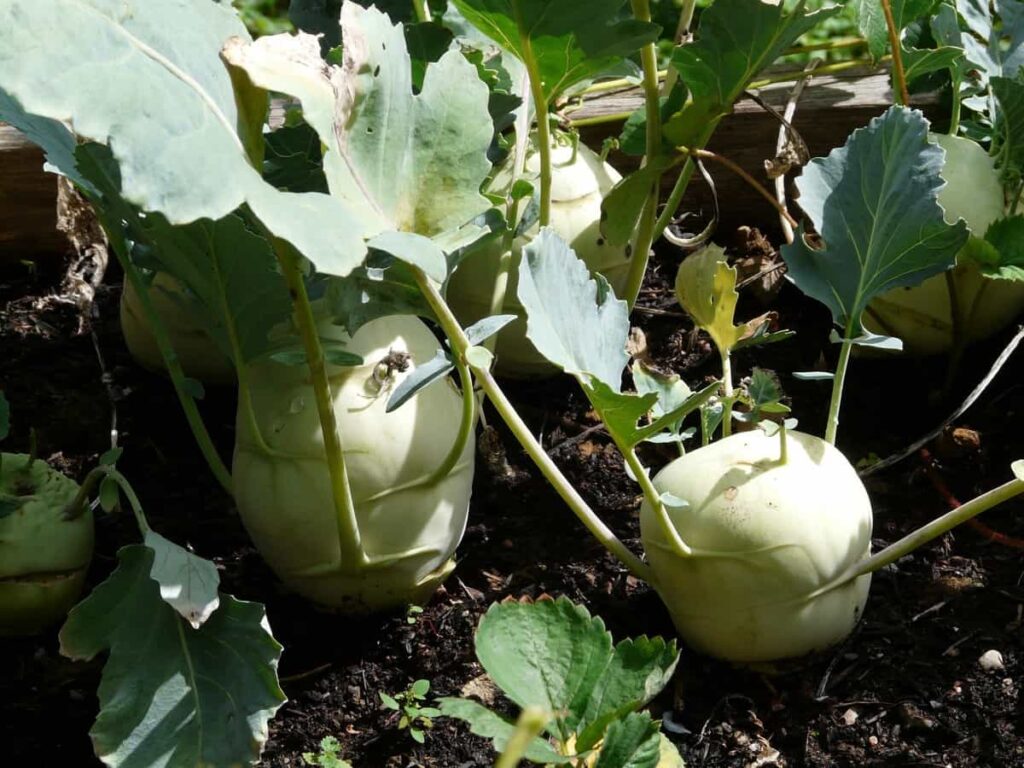
How to grow Kohlrabi in USA
Kohlrabi growing areas in the USA
The USA is one of the top Kohlrabi-producing countries in the world. Kohlrabi is most commonly grown in the United States in California, New York, Florida, Arizona, and Wisconsin.
Soil requirements for growing Kohlrabi in the USA
- Kohlrabi prefers rich, moist soil with plenty of organic matter. It tolerates a wide range of pH levels, from 6.0 to 7.5. Kohlrabi does best in full sun, and it even does well in partial shade.
- When growing Kohlrabi, it is important to keep the soil moist but not waterlogged. Be sure to provide adequate drainage to avoid root rot. A layer of mulch will help keep the soil moist and deter weeds.
- Kohlrabi is a relatively low-maintenance crop, but regular watering and fertilization will produce the best results.
- Kohlrabi can be grown in most regions of the United States. However, it does best in cooler climates with moderate rainfall.
- Kohlrabi can also be grown in sandy or clay soils, but these soils need to be amended with organic matter to improve drainage and increase nutrient availability.
- When choosing a spot to plant Kohlrabi, ensure it gets at least six to seven hours of sunlight per day. If possible, try to find an area protected from strong winds.
- Kohlrabi is a cool-weather crop that thrives in the spring and fall. In warm climates, Kohlrabi can be grown year-round. Kohlrabi prefers full sun but will tolerate some shade. The soil should be well-drained and rich in organic matter. Kohlrabi can be propagated by seed or transplants.
In case you missed it: How to Grow Kohlrabi from Seed to Harvest: Check How this Guide Helps Beginners
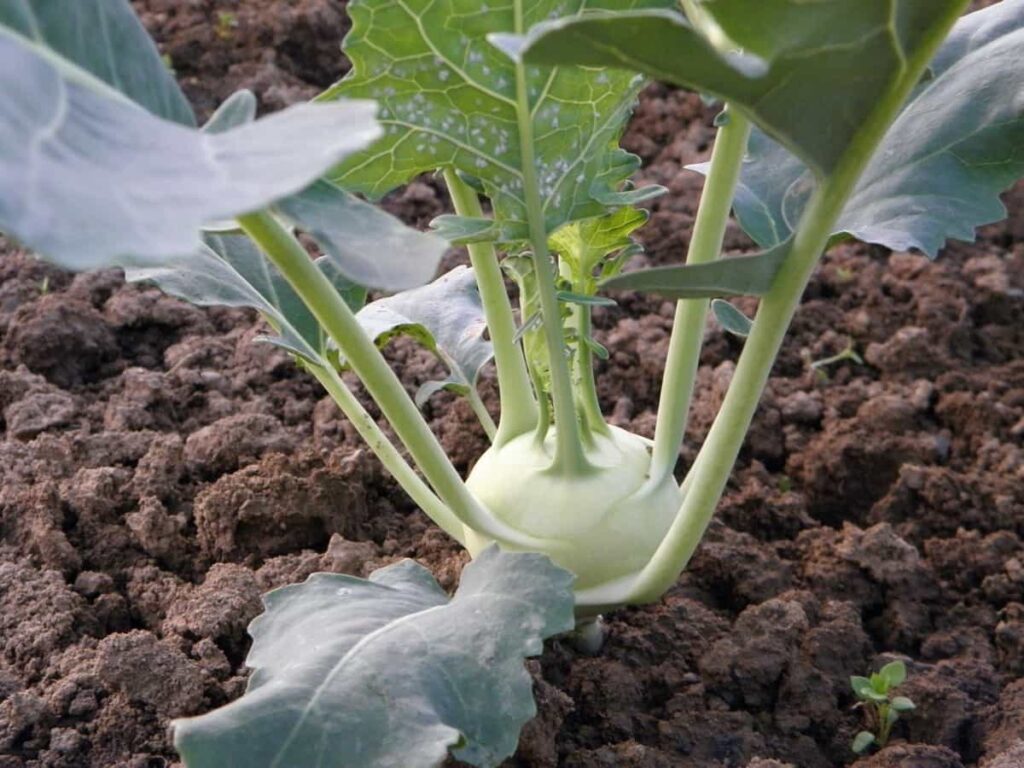
Growing Kohlrabi from seed
- Growing Kohlrabi from seed is a great way to start this unusual and versatile vegetable. The plant produces a large, round, bulbous stem that can be eaten raw or cooked.
- Kohlrabi is native to Europe but has been naturalized in the United States and grows well in most parts of the country. The best time to plant Kohlrabi is spring, after the last frost date. You can directly sow Kohlrabi seeds in your garden or start them indoors and transplant them later.
- When growing Kohlrabi from seed, choosing a sunny spot in your garden with well-drained soil is essential. Kohlrabi is tolerant of most soil types but prefers a slightly acidic pH. If the soil is too alkaline, you can add some sulfur to lower the pH.
- To directly sow Kohlrabi seeds, wait until the soil has warmed and then sow them ½ inch deep and 18 inches apart in rows. Thin the plants to 12 inches apart when they are 4 inches tall. If you are starting Kohlrabi seeds indoors, sow them ¼ inch deep in flats or pots filled with sterile potting mix. Keep the seedlings moist but not wet, and transplant them outdoors when they are 4 to 6 inches tall.
- Kohlrabi can be propagated by seed, but it is also commonly propagated by transplants. Once the seedlings have emerged, thin them so that only the strongest seedling remains in each pot. Transplant the seedlings into larger pots with 4-6 leaves about 6 inches tall—Harden off the Kohlrabi plants for 10 to 14 days before planting them outdoors.
- Choose a sunny location with well-drained soil when transplanting Kohlrabi into your garden. Amend the soil with manure before planting. Space the plants 18-24 inches apart in rows 24-36 inches apart. Water regularly so that the soil stays moist but not soggy. Kohlrabi is ready to harvest when the bulbous base reaches 3-4 inches in diameter.
What is the best fertilizer for growing Kohlrabi in the USA?
There are a few things to consider when selecting a fertilizer for Kohlrabi. One important factor is the type of soil in which the Kohlrabi will be grown. Another is the stage of growth the Kohlrabi is in when the fertilizer is applied. For example, if you’re growing Kohlrabi in sandy soil, you’ll need a different fertilizer than if you’re growing it in clay soil.
And if you’re applying fertilizer during the germination stage, you’ll want a different formula than applying it during the vegetative stage. Kohlrabi does not need a lot of fertilizer but benefits from additional nitrogen during the growing season. Apply an all-purpose fertilizer before planting and side-dress plants with compost or manure every 4-6 weeks during the growing season.
General tips for fertilizing Kohlrabi
- Use a balanced fertilizer with an N-P-K ratio of around 10-10-10.
- Apply fertilizer when the plants are actively growing, usually once every two weeks.
- Avoid using too much nitrogen, which can produce leafy greens instead of bulbous roots.
In case you missed it: Kohlrabi Gardening For Beginners, How To Start
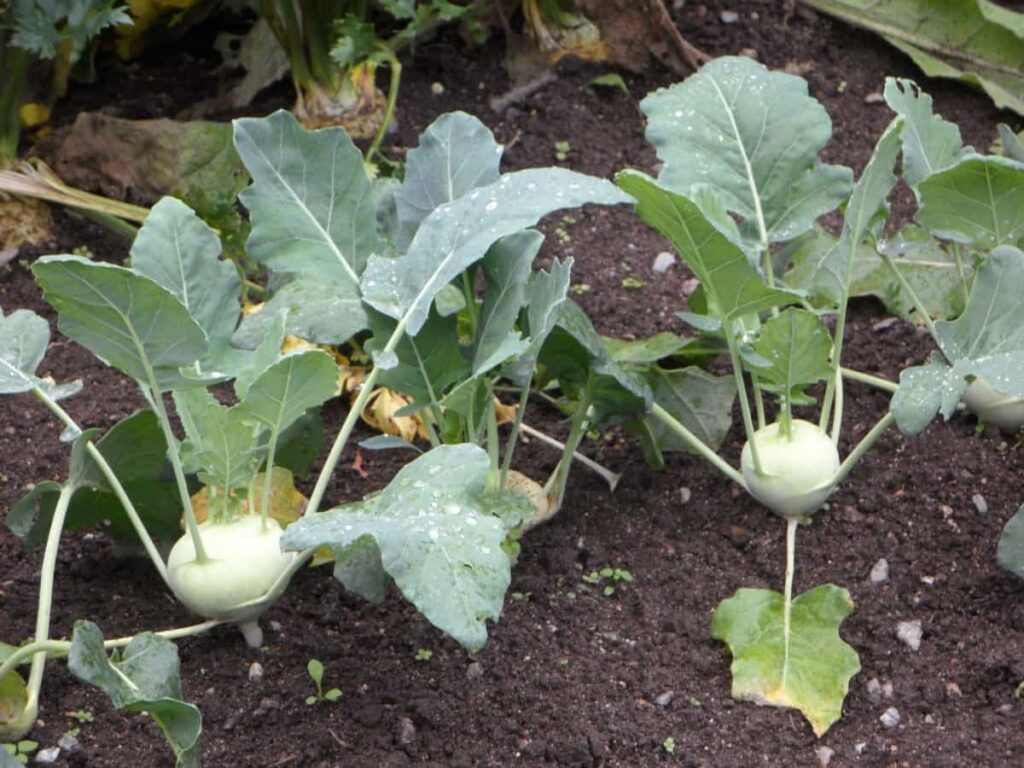
Why is my Kohlrabi not forming bulbs?
The answer for Kohlrabi not forming bulbs is fairly simple and has to do with two main factors: light and water. Kohlrabi needs a minimum of 6 hours of sunlight daily to form bulbs. If your Kohlrabi plant is not getting enough light, it will simply not form bulbs. In addition, Kohlrabi needs consistent moisture to form bulbs.
If the soil around your plant is allowed to dry out, your Kohlrabi will likely not form bulbs again. So, if you’re wondering why your Kohlrabi isn’t forming bulbs, the answer is probably one (or both) of these two factors. Make sure your plant is getting enough light and water, and you should start to see those bulbs forming in no time.
Kohlrabi varieties are grown in the USA
Some common Kohlrabi varieties are Early White Vienna, Early Purple Vienna (early; reddish purple with white flesh), Kolibri (deep purple with white flesh), Granola, Quickstar (pale green with white flesh), and Winner (pale green with white flesh).
- The Early White Vienna is an early maturing variety that produces white, globe-shaped Kohlrabi. It is one of the most popular varieties grown in the USA.
- The Early Purple Vienna is another early maturing variety that produces purple, globe-shaped Kohlrabi. This variety is less common than the Early White Vienna.
- The Granola Kohlrabi is a later maturing variety that produces green, globe-shaped Kohlrabi. It has a slightly nutty flavor and has become more popular recently.
Growing Kohlrabi in containers
- If you live in an apartment or have a small yard, you can still grow Kohlrabi. You only need a container at least 12 inches deep with drainage holes. Fill the container with a high-quality potting mix and compost.
- To grow Kohlrabi in pots, fill a pot with well-drained soil and add some compost or organic matter to the soil. Kohlrabi likes full sun but will also do well in partial shade.
- To plant Kohlrabi, start with transplants or seeds. Sow seeds 1/2 inch deep, spacing them 2 to 4 inches apart. If using transplants, plant them at the same depth as they are in their pots. Once the seedlings emerge, thin them, so they are 6 to 8 inches apart.
- Water your Kohlrabi regularly, especially during hot, dry weather. Apply a layer of mulch around the plants to help retain moisture and suppress weeds. Fertilize every few weeks with a balanced fertilizer such as 10-10-10.
- Harvest Kohlrabi when the bulbs are 2 to 3 inches in diameter. Cut the plant stem about an inch above the bulb. It can be stored in the refrigerator for up to two weeks.
Kohlrabi growing tips indoors
- Kohlrabi is a cool season crop that can be grown indoors in the USA. The best time to start growing Kohlrabi indoors is 4-6 weeks before the last frost date in your area.
- To grow Kohlrabi indoors, you will need a soil mix rich in organic matter and well-drained. You can purchase a pre-made soil mix or make your own by mixing equal parts of garden soil, compost, and perlite.
- Once you have your soil mix, fill pots or trays with the mix and sow the seeds about ½ inch deep. Water the seeds well and place them in a warm location with indirect light. Keep the growing soil moist but not wet, and wait for the seeds to germinate in 7-10 days.
- Once the Kohlrabi seedlings have emerged, thin them out so that only the strongest plants remain. Transplant the seedlings into larger pots when they are 4-6 weeks old using the same soil mix.
- Kohlrabi should be watered regularly, especially during dry spells. Fertilize with a balanced liquid fertilizer every 2-3 weeks to keep plants healthy and productive.
In case you missed it: Virginia Vegetable Planting Calendar: Month-wise Chart, Dates Guide, Schedule for Fall, Winter, Spring, and Summer Seasons
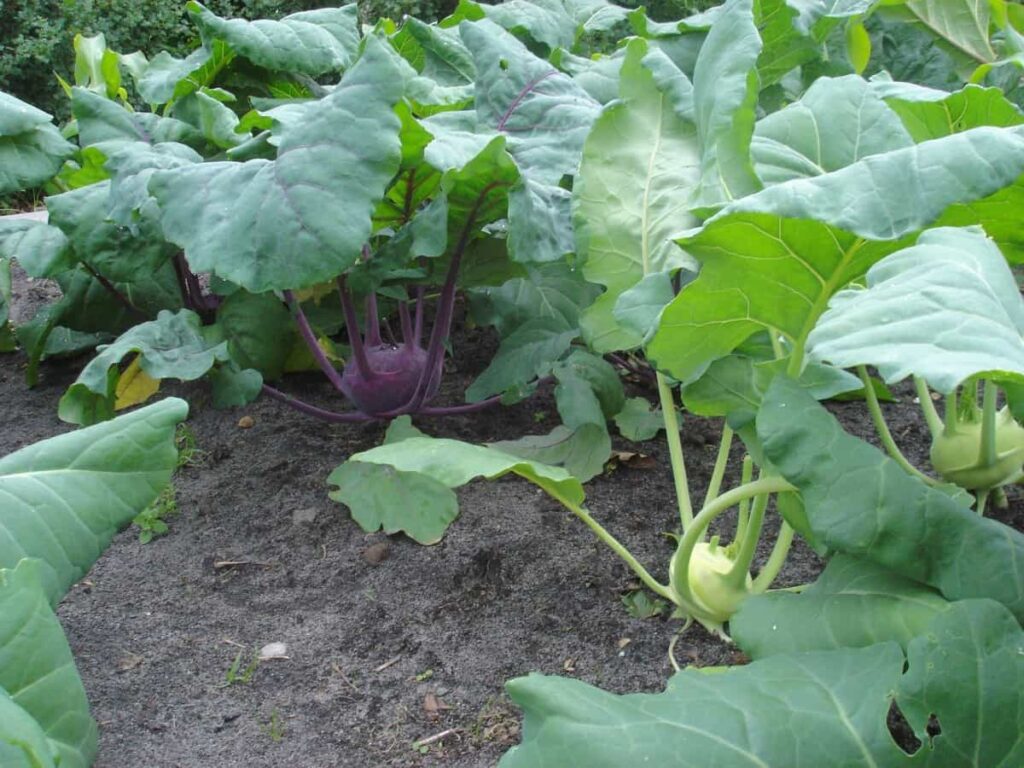
Kohlrabi yield and production in the USA
- Kohlrabi is a Brassica family member, including broccoli, Brussels sprouts, cabbage, and turnips. The vegetable is round or oval with thick, fleshy leaves. The flavor of Kohlrabi is similar to that of cabbage or broccoli.
- Kohlrabi is grown in the United States, New York, Michigan, California, and Wisconsin. The vegetable is harvested from June to October.
- The average yield of Kohlrabi in the United States is 5-10 pounds per plant.
Kohlrabi growing conditions in the USA
- Kohlrabi is a cool-weather crop that grows best in the spring and fall. In the USA, Kohlrabi can be grown in all regions except for the warmest areas.
- The ideal soil for growing Kohlrabi is loamy and well-drained. Kohlrabi does not like wet feet, so ensure the soil is not too dense or too sandy.
- Kohlrabi needs consistent moisture to grow well. Water regularly, especially during dry periods, to keep the soil moist but not soggy. Fertilize every few weeks with a balanced fertilizer to keep plants growing strong.
- As Kohlrabi bulbs swell, you may need to mound up soil around them to prevent them from toppling. This is especially important if you are growing large varieties of Kohlrabi.
- Water Kohlrabi plants regularly to keep the soil moist but not soggy, especially during dry spells. Too much water in the plant can lead to root rot and make Kohlrabi taste more bitter. Mulch around plants to help conserve moisture and suppress weeds.
- When growing Kohlrabi, it is essential to start with rich, well-drained soil. Kohlrabi does best in full sun but will also tolerate partial shade. Before planting, work some compost or manure into the soil to help improve its fertility.
- Water the plants evenly, about 1 inch per week, and make sure the soil drains well. If you are growing Kohlrabi in containers, water more frequently, as containerized plants dry out more quickly than in the ground.
Can you grow Kohlrabi from cuttings?
Although you can grow Kohlrabi from cuttings, it is not the recommended method. Kohlrabi is a root vegetable and cutting the root damages the plant’s ability to produce food. If you decide to grow Kohlrabi from cuttings, use a sharp knife to take a 3-4 inch cutting from the root. Make sure that there are at least two leaves on the cutting. Place the Kohlrabi cutting in a glass of water and put it in a sunny spot. Change the water every few days. Within a week or two, you should see roots growing from the bottom of the cutting. Once the roots are an inch long, you can plant the cutting in soil.
Kohlrabi growing season in the USA
The Kohlrabi growing season in the USA typically runs from late spring through early fall. In cooler climates, Kohlrabi can be grown as a winter crop. Kohlrabi is a cool-weather vegetable that does best in full sun. However, it will tolerate some shade, especially during the hottest months of summer.
In case you missed it: How to Make Potting Soil at Home: Process, Steps, and Guide for Beginners
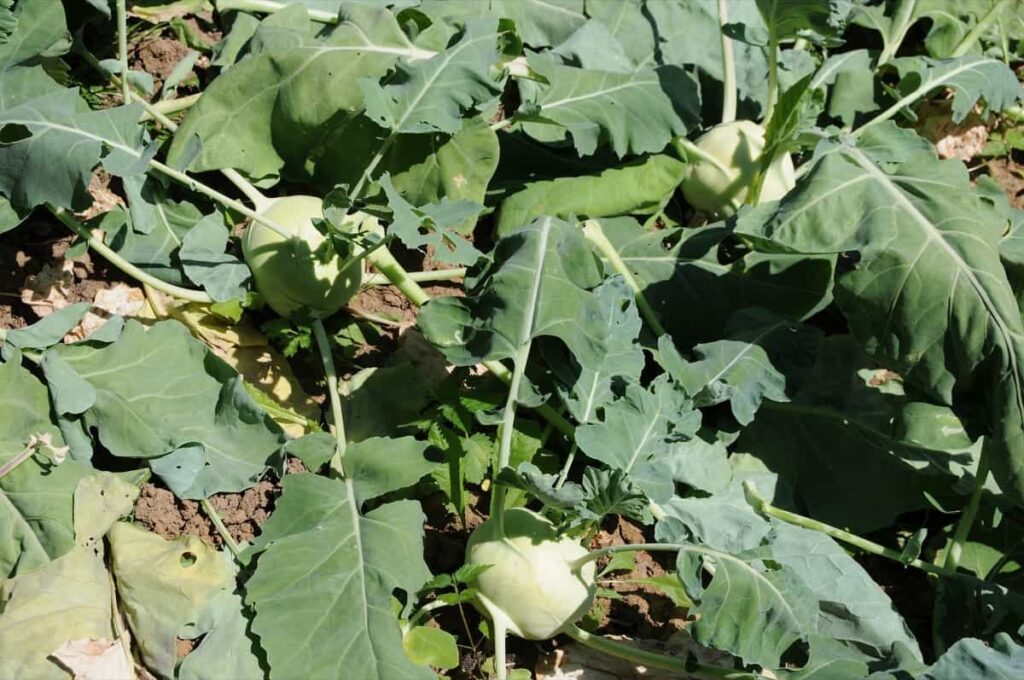
Growing Kohlrabi in California
- Kohlrabi is a cool-weather crop that thrives in the spring and fall in California. It can be sown directly in the garden or started indoors and transplanted.
- Kohlrabi prefers full sun but will tolerate partial shade, especially in hot weather. The soil should be rich, well-drained, and amended with compost before planting.
Growing Kohlrabi in Arizona
- Kohlrabi is a cool-weather vegetable that does well in the Arizona climate. It can be planted in early spring or fall and mature in 50-70 days.
- Kohlrabi prefers full sun but will tolerate partial shade.
Kohlrabi growing problems
Kohlrabi is a relatively easy vegetable to grow, but some pests and diseases can cause problems. The most common pest that affects Kohlrabi is the cabbage root maggot. This pest feeds on the roots of Kohlrabi plants, causing them to become stunted or even die. To control cabbage root maggots, use row covers or insecticidal sprays. There are a few common pests and diseases that can affect Kohlrabi plants.
Aphids, whiteflies, and caterpillars can feed on the plant’s leaves, causing damage. These pests can be controlled with insecticidal soap or neem oil. Diseases that can affect Kohlrabi include downy mildew and bacterial leaf spot. Both of these diseases can be controlled with the use of fungicides. To have a successful Kohlrabi crop, it is necessary to stay on top of pest and disease control.
When and how to harvest Kohlrabi
- Kohlrabi is ready to harvest 60-90 days after planting, depending on the variety. To harvest, twist, or cut the bulbous stem from the plant. Smaller kohlrabies are typically more tender and have a sweeter flavor than larger ones.
- Cut the stem about an inch above the bulb to harvest Kohlrabi with a sharp knife. Be careful not to damage the root system when you are harvesting, as this can cause the plant to bolt (go to seed).
- Once you have harvested your Kohlrabi, you can store it in the fridge for up to two weeks. If you plan on storing it for longer, you can wrap it in plastic and keep it in the freezer.
Frequently asked questions about growing Kohlrabi (FAQ)
What kind of soil do you need for Kohlrabi?
Grow Kohlrabi in loamy, well-drained soil with high organic matter. You can grow acceptable crops on heavier soil as long as it is well-drained and on sandy soil if you water it often.
In case you missed it: Compost Tea Recipe for Your Garden Plants: How to Prepare and Apply
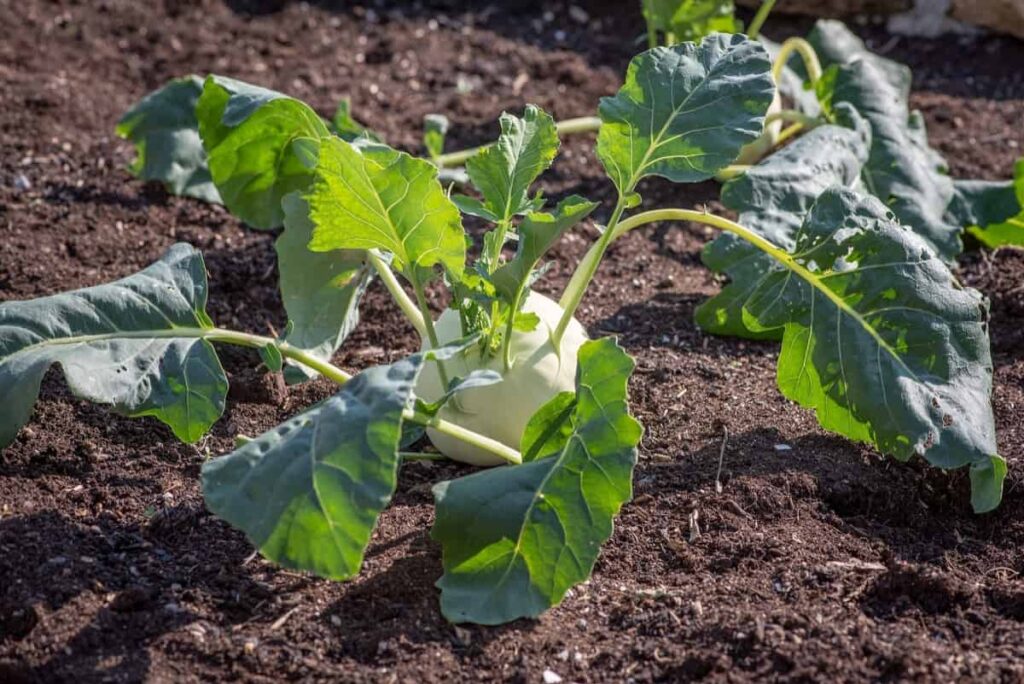
Is Kohlrabi a perennial?
Kohlrabi is a perennial, cool-season vegetable, mostly grown as an annual for its edible stem.
Will Kohlrabi grow back after harvesting?
Yes, it will grow back even after harvesting, but you must leave the bottom part of the stem in the ground. It is technically a biennial plant. It will flower and set seed in the second year of planting rather than producing another edible stem.
Does Kohlrabi need fertilizer?
Kohlrabi is a heavy feeder plant. It is better to feed the Kohlrabi plants by enriching the soil with amendments that improve tilth than to add chemical fertilizers.
Why is my Kohlrabi not growing?
Kohlrabi plants do not grow well when plants are spaced too closely together. It can come from poor growing conditions like too little water, warm or freezing temperatures, or a nutrient deficiency.
Is Kohlrabi difficult to grow?
Kohlrabi is easy to grow, nutritious, and tastes good too. If you like celery, you will like its celery-like, nutty flavor.
Can I grow Kohlrabi in pots?
It is an excellent choice for container gardening.
Conclusion
Kohlrabi is a popular vegetable. It is easy to grow and can be harvested year-round in most regions of the United States. Kohlrabi can be eaten raw or cooked with a mild, slightly sweet flavor.
- Types of Pesticides Used in Agriculture: A Beginner’s Guide
- Economical Aquaculture: A Guide to Low-Budget Fish Farming
- 15 Common Planting Errors That Can Doom Your Fruit Trees
- How to Make Houseplants Bushy: Effective Tips and Ideas
- Innovative Strategies for Boosting Coconut Pollination and Yield
- Pollination Strategies for Maximum Pumpkin Yield
- The Complete Guide to Chicken Fattening: Strategies for Maximum Growth
- Natural Solutions for Tulip Problems: 100% Effective Remedies for Leaf and Bulb-Related Issues
- Revolutionizing Citrus Preservation: Towards a Healthier, Greener Future
- Natural Solutions for Peony Leaf and Flower Problems: 100% Effective Remedies
- Maximizing Profits with Avocado Contract Farming in India: A Comprehensive Guide
- Natural Solutions for Hydrangea Problems: 100% Effective Remedies for Leaf and Flowers
- The Ultimate Guide to Choosing the Perfect Foliage Friend: Bringing Life Indoors
- From Sunlight to Sustainability: 15 Ways to Use Solar Technology in Agriculture
- The Ultimate Guide to Dong Tao Chicken: Exploring from History to Raising
- The Eco-Friendly Makeover: How to Convert Your Unused Swimming Pool into a Fish Pond
- Mastering the Art of Delaware Chicken Farming: Essentials for Healthy Backyard Flocks
- 20 Best Homemade Fertilizers for Money Plant: DIY Recipes and Application Methods
- How to Craft a Comprehensive Free-Range Chicken Farming Business Plan
- Brighten Your Flock: Raising Easter Egger Chickens for Beauty and Bounty
- How to Optimize Your Poultry Egg Farm Business Plan with These Strategies
- Subsidy for Spirulina Cultivation: How Indian Government Schemes Encouraging Spirulina Farmers
- Ultimate Guide to Raising Dominique Chickens: Breeding, Feeding, Egg-Production, and Care
- Mastering the Art of Raising Jersey Giant Chickens: Care, Feeding, and More
- Ultimate Guide to Raising Legbar Chickens: Breeding, Farming Practices, Diet, Egg-Production
- How to Raise Welsummer Chickens: A Comprehensive Guide for Beginners
- How to Protect Indoor Plants in Winter: A Comprehensive Guide
- Ultimate Guide to Grow Bag Gardening: Tips, Tricks, and Planting Ideas for Urban Gardeners
- Guide to Lotus Cultivation: How to Propagate, Plant, Grow, Care, Cost, and Profit
- Agriculture Drone Subsidy Scheme: Government Kisan Subsidy, License, and How to Apply Online
- Ultimate Guide to Raising Araucana Chickens: Breed Profile, Farming Economics, Diet, and Care
- Bringing Hydroponics to Classroom: Importance, Benefits of Learning for School Students
- Ultimate Guide to Raising Polish Chickens: Breed Profile, Farming Economics, Diet, and Care
- Ultimate Guide to Raising Australorp Chickens: Profile, Farming Economics, Egg Production, Diet, and Care
- Silkie Chicken Farming: Raising Practices, Varieties, Egg Production, Diet, and Care
- Sussex Chicken Farming: Raising Practices, Varieties, Egg Production, Diet and Care